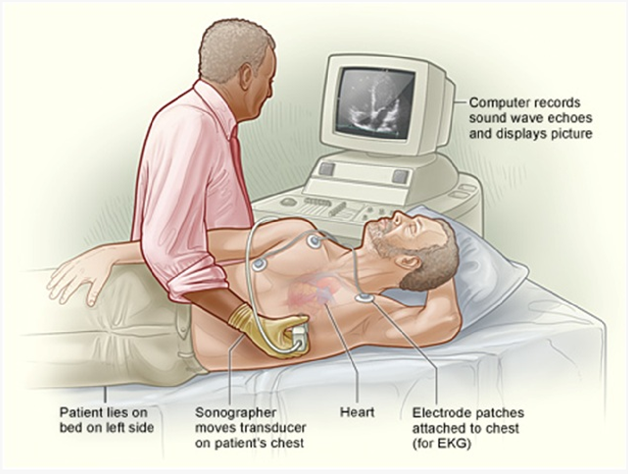The nurse is providing discharge teaching to a client with venous insufficiency about compression stockings. Which information is essential for the nurse in the teaching plan?
The need to take anticoagulants concurrent with using compression stockings
The need to wear the stockings on a one day on, one day off schedule
The importance of wearing the stockings around the clock to ensure maximum benefit
The importance of ensuring the stockings are applied evenly with no pressure points
The Correct Answer is D
The importance of ensuring the stockings are applied evenly with no pressure points: Compression stockings are designed to provide graduated pressure to the legs, helping improve blood flow and reduce swelling in individuals with venous insufficiency. It is crucial for the client to understand how to properly apply the stockings to maximize their effectiveness and prevent any complications. The nurse should emphasize the following points:
● Ensure the stockings are applied evenly: The stockings should be applied smoothly and evenly without any folds or wrinkles. This helps ensure that the pressure is distributed uniformly, enhancing their therapeutic effect.
● Check for pressure points: The client should be instructed to pay attention to any areas where the stockings may be causing excessive pressure or discomfort. Pressure points can impair circulation or cause skin damage. If pressure points are noticed, adjustments should be made to ensure proper fit and comfort.
● Follow manufacturer's instructions: The nurse should provide specific instructions regarding how to correctly don the compression stockings, including any specific guidelines provided by the manufacturer. This may include recommendations for the time of day to apply the stockings or any specific donning techniques.
The other options mentioned in the question are not essential information for the teaching plan:
The need to take anticoagulants concurrent with using compression stockings: While some individuals with venous insufficiency may require anticoagulant therapy, it is not directly related to the use of compression stockings. Anticoagulant therapy is typically prescribed for other reasons, such as prevention or treatment of blood clots.
The need to wear the stockings on a one day on, one day off schedule: Wearing compression stockings on a specific schedule of one day on, one day off is not a standard recommendation. The frequency and duration of wearing compression stockings may vary based on individual needs and healthcare provider's recommendations.
The importance of wearing the stockings around the clock to ensure maximum benefit: While consistent and regular use of compression stockings is important, it is not necessary to wear them around the clock. Healthcare providers typically provide specific guidelines on how long the stockings should be worn each day, which may vary based on the severity of venous insufficiency and individual factors.
Nursing Test Bank
Naxlex Comprehensive Predictor Exams
Related Questions
Correct Answer is D
Explanation
Monitoring a client after a transesophageal echocardiogram involves observing the client for any immediate post-procedure complications or adverse reactions. This may include assessing vital signs, monitoring for signs of bleeding or infection, and reporting any concerning symptoms or changes in the client's condition to the nurse.
Checking the client's catheter site after a coronary angiogram requires assessing the site for bleeding, hematoma, or signs of infection. This task involves more complex assessment skills and would typically be performed by the nurse.
Teaching a patient about exercise electrocardiography involves providing education on the purpose of the test, the procedure itself, and any preparation or precautions the patient needs to take. This task requires specialized knowledge and is best performed by the nurse who can address the patient's specific questions and concerns.
Attaching ECG monitoring electrodes after a patient bathes requires technical knowledge and skill in properly placing the electrodes and ensuring accurate ECG readings. This task also falls within the scope of the nurse's responsibilities.
Delegation should be based on the UAP's skill set, training, and the complexity of the task. While the UAP can provide valuable support in monitoring a client after a transesophageal echocardiogram, the other tasks mentioned require the expertise and knowledge of a nurse.
Correct Answer is A
Explanation
The nurse should teach the client that the transthoracic echocardiography is a noninvasive test and that nothing will be inserted into the client's body.
Transthoracic echocardiography is a diagnostic procedure that uses ultrasound to create images of the heart's structures and assess its function. It is a noninvasive test, meaning that it does not involve any insertion of instruments or devices into the body. Instead, a transducer is placed on the chest to obtain images of the heart.
The statement about managing pain aggressively during the procedure is not applicable to transthoracic echocardiography. It is generally a painless procedure that does not cause discomfort.
Transthoracic echocardiography primarily provides detailed images of the heart's structures and function, such as the chambers, valves, and pumping action. It does not specifically profile the heart's electrical activity, which is usually assessed using an electrocardiogram (ECG) or other specialized tests.
Regarding bed rest after the test, there is typically no need for bed rest following transthoracic echocardiography. The client can usually resume normal activities immediately after the procedure. However, the nurse should provide specific instructions based on the client's condition and any additional tests or interventions planned.

Whether you are a student looking to ace your exams or a practicing nurse seeking to enhance your expertise , our nursing education contents will empower you with the confidence and competence to make a difference in the lives of patients and become a respected leader in the healthcare field.
Visit Naxlex, invest in your future and unlock endless possibilities with our unparalleled nursing education contents today
Report Wrong Answer on the Current Question
Do you disagree with the answer? If yes, what is your expected answer? Explain.
Kindly be descriptive with the issue you are facing.
